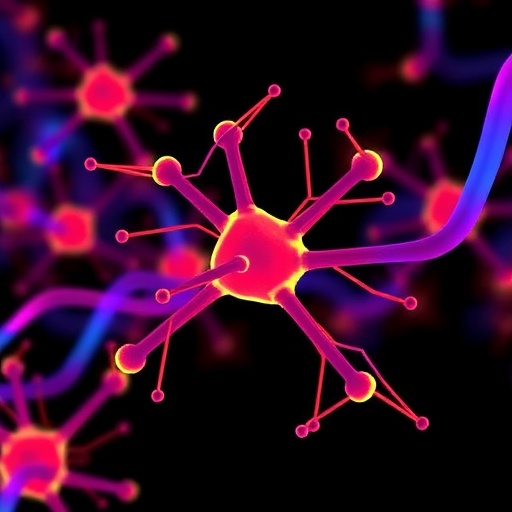Recent research has shed light on a promising new therapeutic avenue for addressing neurotoxicity brought about by lipopolysaccharides (LPS) in the brain. Conducted by a team of scientists, the study zeroes in on the protective qualities of crocin, a compound derived from saffron, known not only for its culinary uses but also its potential biomedical applications. The hippocampus, a vital region for memory and learning, was the focal point of this investigation, given its susceptibility to various forms of injury.
In the context of neuropharmacology, lipopolysaccharides are known to provoke an inflammatory response that can lead to significant neuronal damage. This inflammatory process is initiated when immune system components inadvertently affect the brain’s biochemical balance. Through the introduction of LPS in male albino rats, the research aims to simulate conditions that reflect what might occur in neurodegenerative diseases, thereby allowing a controlled investigation into potential interventions.
Crocin was chosen for its multifaceted properties, including its antioxidant capacities and neuroprotective effects, which have been suggested in previous studies. While saffron is historically revered for its medicinal properties, much of its potential has remained underexplored until recent years. The breaking down of crocin’s molecular interactions within a biological system could illuminate pathways by which neuroprotection occurs, offering fresh insights for future therapeutic strategies.
Utilizing a combination of biochemical analyses and histopathological assessments, the researchers sought to quantify crocin’s ameliorative effects. Biochemical markers of oxidative stress, inflammation, and neuronal integrity were carefully scrutinized to ascertain the degree to which crocin could offset the toxic effects of LPS. The histopathological evaluations provided a tangible depiction of neuronal health post-treatment, as structural integrity is paramount for proper cognitive function.
Moreover, immunohistochemical techniques were employed to visualize specific markers associated with inflammation and neuronal health. Through these advanced methods, the team was able to pinpoint changes in cellular expression that indicated a reduction in the inflammatory response attributed to crocin’s intervention. This multidimensional approach strengthens the credibility of the findings and advocates for crocin’s potential as a therapeutic agent.
As the study progressed, the researchers noted significant differences in the biochemical profiles of the groups that were administered crocin compared to those subjected solely to LPS. These observations hint at a broader mechanism of action wherein crocin not only ameliorates oxidative stress but may also actively modulate the inflammatory pathways adversely affecting neuronal tissue. It is not just a passive defense; crocin appears to exert a regulatory effect on inflammatory responses, positioning it as a potential candidate for further clinical exploration.
The implications of these findings transcend basic research, representing a glimmer of hope for individuals grappling with neurodegenerative conditions. With current therapeutic options often limited and focused primarily on symptomatic relief, crocin’s dual-action role as both an antioxidant and an anti-inflammatory agent warrants consideration in the realm of neuropharmacology.
Understanding such agents’ mechanisms paves the way for innovation in treating conditions rooted in neuroinflammation and oxidative stress. As the research community delves deeper, crocin’s ease of access and formulated versions could expedite its application in therapeutic regimens. Future studies will be crucial in establishing optimal dosages and formulations that harness its full potential.
Adopting a holistic view, these findings advocate for a reassessment of natural compounds in modern medicine, particularly in combating the challenges posed by complex neurological disorders. The suggestion that everyday ingredients can hold significant therapeutic potential underscores the importance of integrating traditional wisdom with modern scientific inquiry.
Furthermore, it also raises awareness of saffron and crocin’s roles beyond culinary use, prompting food scientists and nutritionists to investigate the implications of dietary sources on brain health. As these narratives intertwine, there lies an opportunity for healthcare providers to recommend dietary interventions alongside conventional treatment pathways, fostering a comprehensive approach to cognitive health.
As the implications of this research unfold, its contributions to the scientific discussions surrounding neuroinflammation and neurodegeneration will surely fuel further interest in the exploration of naturally occurring substances as viable treatment options. Increased public and scientific interest could very well lead to novel clinical applications and ultimately, to enhancing the quality of life for those affected by neurodegenerative diseases.
The study’s significance is amplified not only through its immediate findings but also through its potential to inspire subsequent research avenues aimed at elucidating the complexities of brain health and disease. By demonstrating the viability of crocin as a neuroprotective agent, this research lays a foundation for ongoing exploration that may one day result in groundbreaking advancements in the treatment of chronic neurological conditions.
As researchers continue to explore the interface between diet, lifestyle, and brain health, this exciting study serves as a pivotal chapter in the broader narrative of understanding how we might better support our neurological systems through the incorporation of naturally derived compounds such as crocin.
With the research community eager to validate and expand upon these findings, crocin stands poised at the intersection of innovation and tradition, offering a path forward into uncharted territories of neuropharmacological studies.
Subject of Research: The ameliorative effect of crocin against lipopolysaccharide‑induced hippocampal toxicity in male albino rats.
Article Title: Biochemical, histopathological, and immunohistochemical study on the ameliorative effect of crocin against lipopolysaccharide‑induced hippocampal toxicity in male albino rats.
Article References: Awadalla, E.A., Mohamed, O., Abdelsadik, A. et al. Biochemical, histopathological, and immunohistochemical study on the ameliorative effect of crocin against lipopolysaccharide‑induced hippocampal toxicity in male albino rats. BMC Pharmacol Toxicol 26, 198 (2025). https://doi.org/10.1186/s40360-025-01021-y
Image Credits: AI Generated
DOI: https://doi.org/10.1186/s40360-025-01021-y
Keywords: Crocin, Neuroprotection, Lipopolysaccharides, Hippocampus, Inflammation, Oxidative Stress, Neurodegeneration, Saffron, Antioxidants, Histopathology.
Tags: antioxidant properties of crocincrocin neuroprotectionhippocampus injury mitigationinflammatory response neuropharmacologylipopolysaccharides hippocampal damagememory and learning protectionmolecular interactions of crocinneurodegenerative disease modelsneuroinflammation and treatment strategiesneurotoxicity in ratssaffron biomedical applicationstherapeutic interventions with crocin





